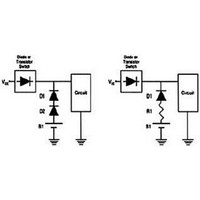BR1225 RAYOVAC, BR1225 Datasheet - Page 23

BR1225
Manufacturer Part Number
BR1225
Description
LITHIUM BATTERY, 3V, COIN CELL
Manufacturer
RAYOVAC
Datasheet
1.BR1225.pdf
(26 pages)
Specifications of BR1225
Battery Size Code
Coin Cell
Battery Capacity
50mAh
Battery Voltage
3V
Battery Technology
Lithium
Battery Terminals
Pressure Contact
External Diameter
12.5mm
External Height
2.5mm
Lead Free Status / RoHS Status
na
Available stocks
Company
Part Number
Manufacturer
Quantity
Price
Company:
Part Number:
BR1225
Manufacturer:
MAXWELL
Quantity:
4 000
Company:
Part Number:
BR1225-1VC
Manufacturer:
STANLEY
Quantity:
3 000
Company:
Part Number:
BR1225/1HC
Manufacturer:
SMSC
Quantity:
3 000
Company:
Part Number:
BR1225/H1A
Manufacturer:
TAIYO
Quantity:
4 000
Company:
Part Number:
BR1225A/HBN
Manufacturer:
Panasonic
Quantity:
4 000
E. Disposal
This statement is provided as a service to those
who may want information concerning the safe
disposal of waste Rayovac BR and FB (Lithium
Carbon-monofluoride) battery products for the
USA. These products may be distinguished from
other battery products by the presence of the
letters BR or FB in the product designation, and are
manufactured in a disk or "coin" shape and square
modules.
This information does not apply to any other
Lithium chemistry or Lithium Carbon-monofluoride
products in other form factors.
Note: Where regulations regarding management of
spent/waste Lithium batteries exist outside of the
USA, they generally differ significantly from United
States regulations. For information regarding
recommended disposal and management practices
in regions or countries other than the USA, please
contact Rayovac at 1-800-237-7000 within the
USA, or 608-275-3340 if outside the USA and ask
for Tim Anderson.
Regarding Rayovac BR Lithium cells and FB
Lithium battery waste battery management in the
USA:
Waste BR Lithium cells and FB Lithium batteriess
are neither listed nor exempted from the USEPA
hazardous waste regulations. Waste BR and FB
Lithium products can be considered reactive
hazardous waste if there is a significant amount of
unreacted, or unconsumed Lithium remaining. This
potential problem may be avoided by discharging
waste cells and batteries prior to disposal. One
tested method for doing this is to place small
quantities of BR Lithium cells or FB Lithium
batteries into a metal container with sufficient
graphite to cover and surround the individual cells.
This procedure will discharge the cells in
approximately two weeks to the point where no
reactive Lithium remains. The cells may then be
disposed of as nonhazardous waste in an ordinary
landfill under Federal regulations. The graphite can
be reused many times, as needed, or can be
disposed of as nonhazardous waste.
23
Other Disposal Methods
For a list of facilities with demonstrated ability to
manage waste BR Lithium cells and FB Lithium
battery products as hazardous waste, please click
here. The list is not guaranteed to be all inclusive,
nor does it seek to exclude potential service
suppliers. Rayovac provides it as a customer
service to assist the customer in determining what
their management options could be. Always review
your choice of firm before sending wastes.
Cautions
Under United States Federal law, waste generators
are responsible for their wastes. Be sure to check
your regional, national, or local regulations as they
may differ significantly. Always remember that
waste battery products may still have considerable
energy remaining in them. Handle such products
with care and in accordance with applicable
USDOT, IATA, or ICAO regulations.
F. Soldering
Rayovac's BR and FB component class Lithium
batteries are suitable for direct soldering onto
printed circuit boards (PCB). A welded tab or pin
soldered to a PCB will ensure the highest contact
reliability available. Observe these precautions to
assure life-of-product reliability:
1.Hand Soldering
2.Wave Soldering
Never solder directly to cell cases. The resultant
heat will cause permanent internal damage to the
cell. Soldering of tabbed batteries should be
accomplished with a low wattage soldering iron
by applying heat just long enough to achieve a
good connection.
During the period when the battery tabs or pins
are in the solder bath, the battery is short
circuited. If this period is kept to under 5
seconds the battery capacity loss will be
minimized. Following a short circuit the battery
voltage will recover to above 2.5 volts almost
immediately while full recovery to its final
working voltage may take hours or even days.
This characteristic must be taken into account
when making electrical measurements on
recovering batteries or when establishing
manufacturing pass/fail points.















